Invalid Date

AB
How does Ops Intelligence reduce MIS prep time?
Discover how Ops Intelligence reduce MIS prep time from days to minutes. Eliminate data silos and streamline reporting for real-time insights.
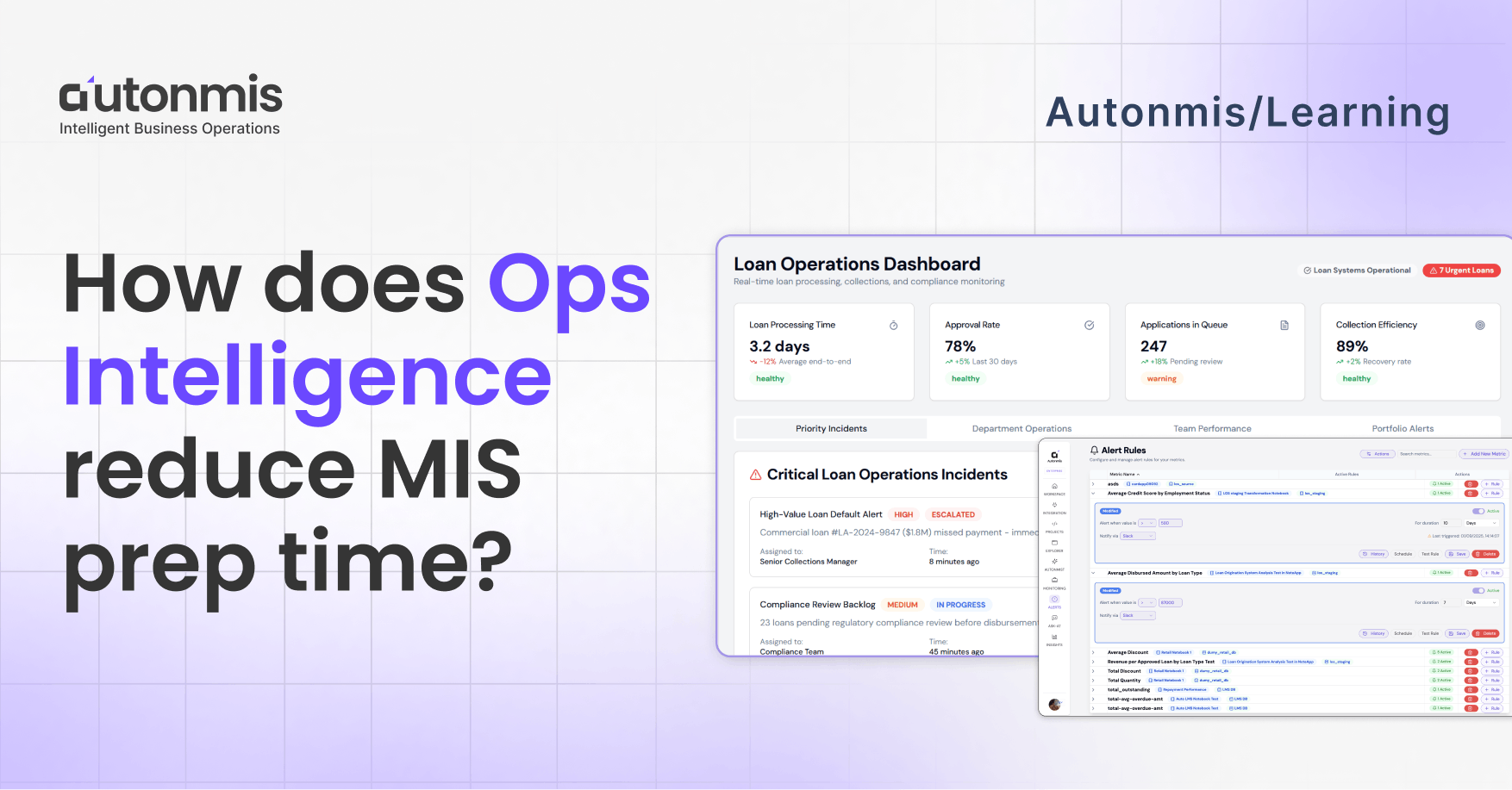
You are familiar with the scene if you have ever been in charge of an analytics or operations team.
Monday morning. "MIS pending" messages abound in the inbox. Teams are exchanging spreadsheets. The dashboard of someone is refusing to refresh. Data from last Thursday is being pursued by another individual. The figures are already outdated by the time the MIS deck is prepared for review.
The actual bottleneck is the lag between what is happening and what is visible.
Ops Intelligence is specifically designed to address this issue. In this post, we will explore how does ops intelligence reduce MIS prep time.
Why MIS Prep Still Takes Days
The MIS process hasn't changed much in years for the majority of lenders and financial operations teams.
The majority of reports are still put together by hand, despite data warehouses and business intelligence tools.
This explains why it takes so long:
Data is stored in silos. Every system, including LOS, LMS, collections, and payments, presents a different picture of reality. It takes time to pull it together.
Analysts are overburdened. Instead of analyzing, they spend hours cleaning, combining, and balancing.
No common context exists. Different teams have different definitions for metrics, which leads to more back and forth before the final pack is distributed.
Reports don't change. By the time MIS reaches leadership, it is describing the reality of the previous week, not the current one.
The outcome? Issues are only addressed by teams after they have already resulted in losses or SLA violations.
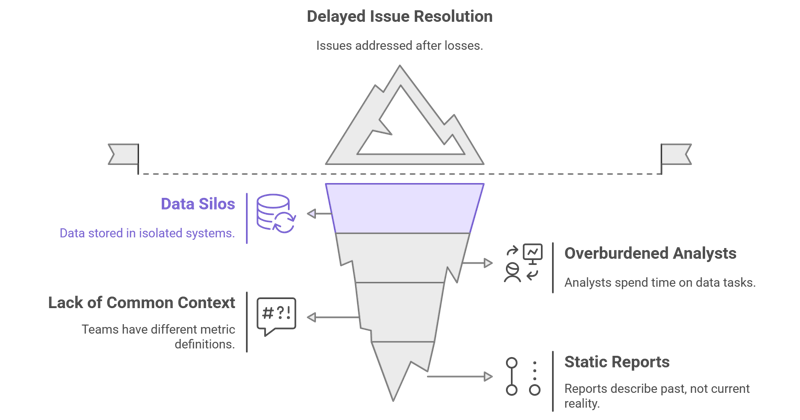
Checkout: The Hidden Cost of Manual Operations in BFSI
What Ops Intelligence Really Does
Ops Intelligence is not another BI system or dashboard tool.
It's an operational layer that sits on top of your current systems and provides a real-time, shared view of what's going on.
Autonmis, for instance, is an AI-native Ops Intelligence platform built specifically for this.
Without requiring extensive engineering work or system modifications, it links data from LOS, LMS, collections, and payments systems, standardizes it, and transforms it into actionable visibility.
Making all of your current systems function together in real-time is more important than replacing what you currently have.
From Manual Prep to Automated, Audit-Ready MIS
Let's examine how does ops intelligence reduce MIS prep time.
1. Constant Data Flow Instead of Manual Exports
Ops Intelligence platforms such as Autonmis connect directly to your operational systems, eliminating the need for teams to pull data once a week.
After connecting, they sync updates automatically, so there are never any manual downloads or refresh delays and your MIS always displays the most recent data.
2. Common Measures, Constructed
Every operations team is aware of the ambiguity surrounding definitions: "What precisely is a stuck disbursement?" or "How is DPD 30+ measured?"
This is resolved by Ops intelligence using pre-made KPI models that correspond to your applications, disbursements, collections, and governance processes.
This guarantees that all reports, regardless of teams or time periods, are founded on the same metric logic.
As a result, reports are generated more quickly and there are fewer arguments over numbers.
3. Automated Alerts and MIS Packs
MIS shouldn't be a weekly occurrence. It turns into a constant stream of insights with operations intelligence.
With Autonmis, you can plan automated MIS packs with charts, trends, and audit trails that are sent to executives or regulators via Teams, Slack, or email.
Every report has a time stamp for compliance and is connected to the original data.
Result: MIS prep time drops dramatically - from multiple days to minutes - and data is always audit-ready.
Checkout: Top 6 Ways AI Is Transforming Business Operations
4. From Reports to Exceptions in Real Time
Ops Intelligence platforms automatically flag anomalies and SLA breaches rather than searching spreadsheets for issues.
For instance:
- An alert is triggered when the disbursement queue surpasses its TAT threshold.
- DPD buckets growing faster than normal surface as early warnings.
- Gaps in compliance, such as incomplete mandates or missing evidence, are noted for further investigation.
Issues are addressed more quickly because alerts are linked to owners and teams.
As a result, less time is spent describing what occurred. More time to make sure it doesn't occur again.
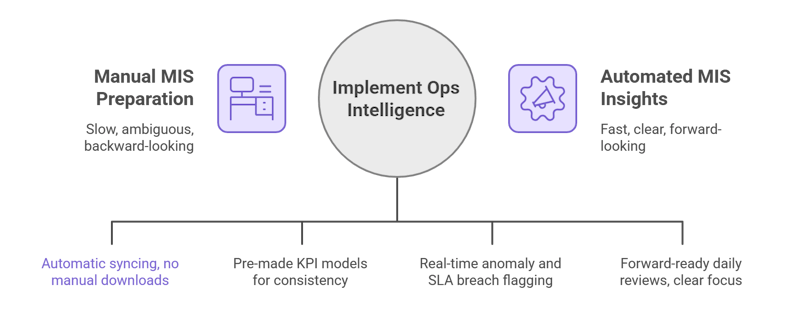
5. Up-to-Date Leadership Opinions
The biggest win of Ops Intelligence isn’t speed - it’s clarity.
Your daily reviews shift from asking "What went wrong last week?" to asking "What needs our attention today?" when your leadership dashboard automatically updates.
That shift - from backward-looking to forward-ready - is where real operational maturity begins.
Checkout: What is Operational Intelligence (OI)? Complete 2025 Overview
From MIS to Mission Control
Reducing MIS prep time requires more than just automation; it also entails changes to the way your operations function.
Teams act on real-time data rather than waiting days for numbers.
They address issues as they arise rather than discovering them later.
Additionally, MIS becomes a real-time reflection of your operations rather than a monthly chore.
Ops Intelligence promises that.
It doesn’t just save time — it gives your business the one thing every leader wants: clarity, now.
Recommended Learning Articles
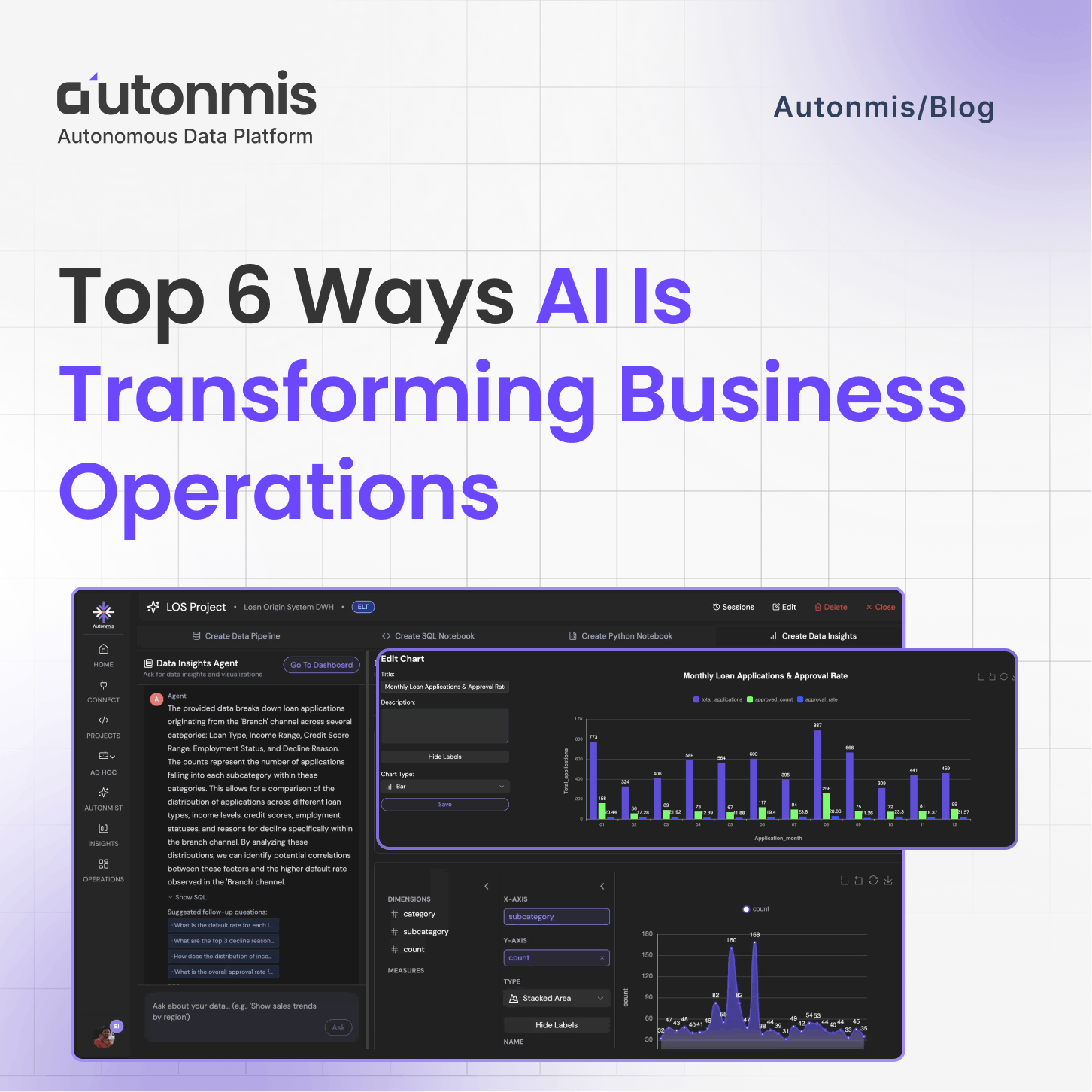
10/23/2025
Top 6 Ways AI Is Transforming Business Operations
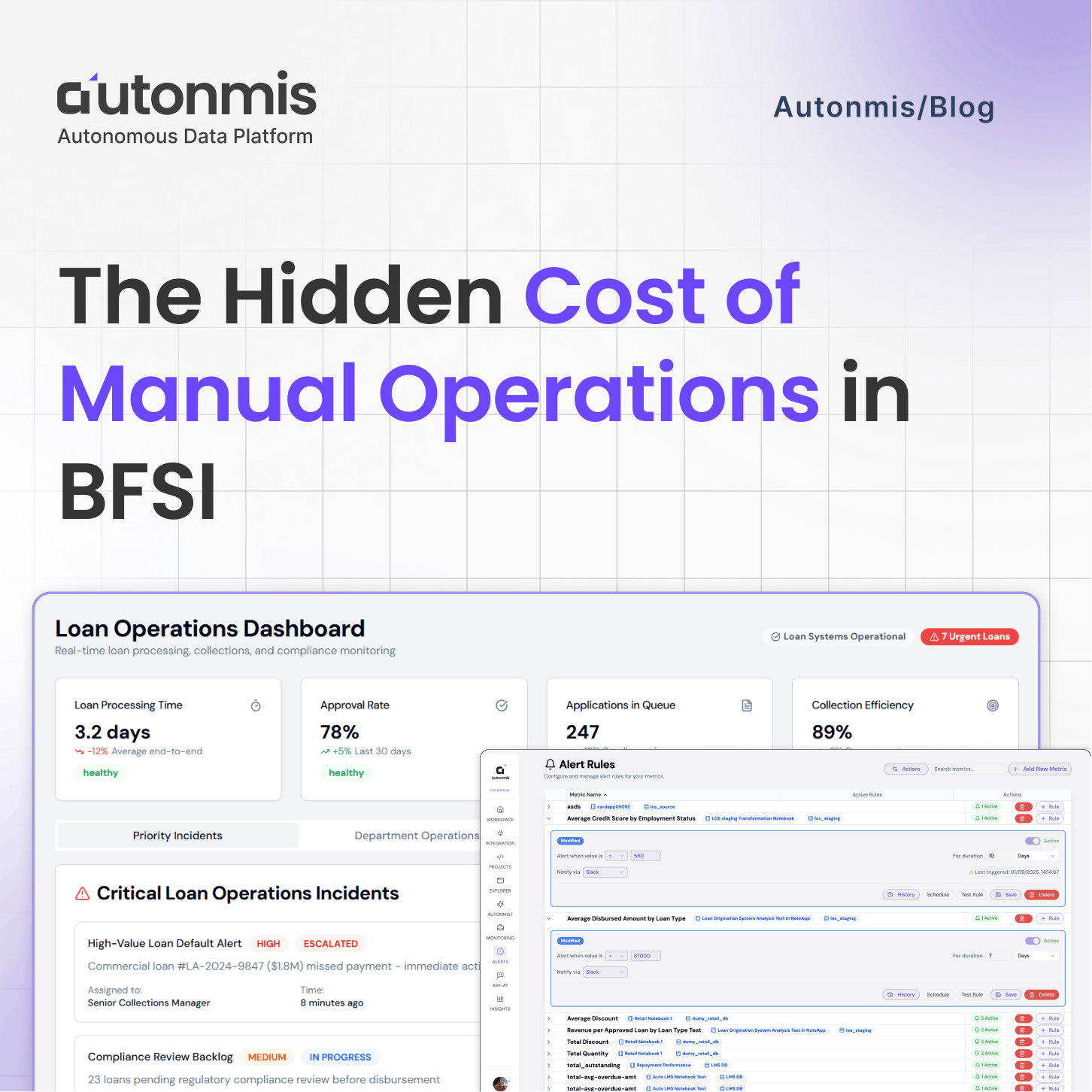
9/22/2025

AB
The Hidden Cost of Manual Operations in BFSI
Actionable Operational Excellence
Autonmis helps modern teams own their entire operations and data workflow — fast, simple, and cost-effective.